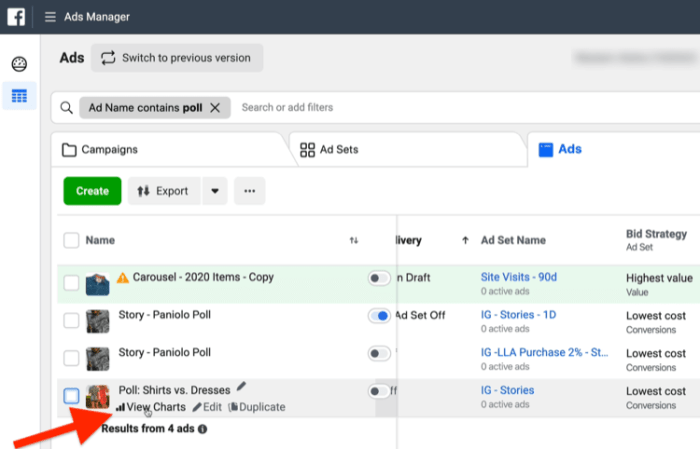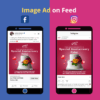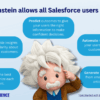7 tips for using facebook poll and instagram polling sticker ads. Unlock the power of interactive marketing with these crucial strategies. Learn how to create engaging polls, target the right audience, and analyze results to maximize your campaign impact. Discover actionable insights on crafting effective questions, optimizing poll design, and running successful campaigns on Facebook and Instagram.
Get ready to elevate your social media strategy and boost engagement!
Facebook polls and Instagram polling stickers offer a unique opportunity to connect with your audience on a deeper level. These tools are more than just a way to gather feedback; they are a powerful way to understand your audience’s preferences, drive engagement, and ultimately boost your brand’s visibility. This guide will walk you through the process of optimizing your polls for maximum impact.
Introduction to Facebook Polls and Instagram Polling Stickers
Facebook polls and Instagram polling stickers are powerful tools for marketers seeking to engage with their audience and gather valuable insights. These features allow brands to directly interact with their followers, fostering a sense of community and generating data-driven decisions. They are particularly useful for gauging audience preferences, testing product ideas, and creating a more interactive experience on social media.These interactive elements transform passive social media browsing into active participation.
Users feel heard and valued when they can contribute to a brand’s content creation process. This dynamic engagement, in turn, strengthens brand loyalty and builds a more receptive audience. Understanding how to effectively leverage these tools is key to maximizing their impact on marketing campaigns.
Functionality and Use Cases
Facebook polls and Instagram polling stickers are simple, yet effective, tools. Facebook polls are easily integrated into posts, allowing users to answer a question with multiple options. These can be used for everything from quick surveys about a new product to gauging audience opinions on a current event. Instagram polling stickers are a more visual and streamlined way to engage.
They allow users to respond directly to a story with a selection of answers. This makes them ideal for asking quick questions, running contests, or generating buzz around specific content. Both tools are designed to foster audience participation and generate immediate feedback.
Benefits for Engagement and Audience Interaction
Using these features offers significant advantages for engagement and audience interaction. They transform social media interactions from one-way communication to a dynamic exchange. This can lead to increased brand awareness and higher levels of customer loyalty. Direct interaction builds trust and fosters a sense of community around the brand. Real-time insights into audience preferences can guide future content creation and product development, leading to more relevant and effective marketing strategies.
For instance, if a brand wants to gauge interest in a new product line, a poll or sticker can help determine customer interest before investing significant resources.
Examples of Successful Campaigns
Numerous campaigns have effectively used Facebook polls and Instagram polling stickers. For example, a clothing brand might use a poll to gauge interest in different color options for a new line of apparel. A food company could use an Instagram sticker to ask followers their favorite flavor combination, then use the insights to inform future product development. By actively engaging users in the decision-making process, brands create a more authentic and meaningful connection with their audience.
The key is to use these tools in alignment with broader marketing objectives and to frame questions that offer valuable insights.
Integration into a Broader Social Media Strategy
These tools are seamlessly integrated into a broader social media strategy. They can be used as a stand-alone campaign, or they can be combined with other content formats like videos or images. For instance, a video showcasing a new product launch could be accompanied by a poll asking viewers their preferred use case. This multifaceted approach helps create a more cohesive and engaging social media presence, driving meaningful audience interactions.
Successful campaigns leverage these interactive elements to amplify the overall impact of their social media efforts.
Comparison of Facebook Polls and Instagram Polling Stickers
| Feature | Facebook Polls | Instagram Polling Stickers |
|---|---|---|
| Platform | ||
| Format | Text-based questions and options | Visual sticker format within stories |
| Integration | Within posts, Stories, and Groups | Within Instagram Stories only |
| Visual Appeal | Less visually engaging | Highly visual and interactive |
| Reach | Potentially wider, depending on post visibility | Limited to the story’s reach |
| Engagement Potential | High, if used strategically in posts | High, due to the visual and interactive nature |
| Data Collection | Detailed results, allowing for various data analyses | Simple results, ideal for quick feedback |
| Weaknesses | Can feel less integrated with the story format | Limited to story format; results not as easily accessible for deeper analysis |
Crafting Effective Poll Questions
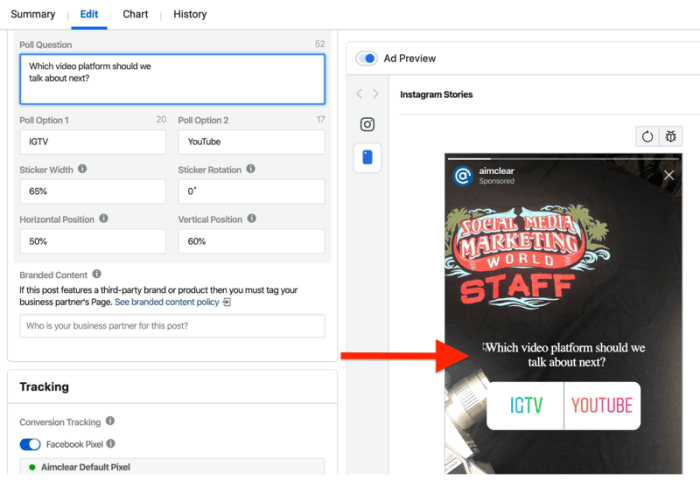
Crafting compelling poll questions is crucial for maximizing engagement and deriving meaningful insights from your Facebook and Instagram campaigns. Clear, concise, and unbiased questions are key to collecting accurate data that can inform your marketing strategies and improve your understanding of your audience. This section will delve into best practices for creating effective poll questions, examining various question types and their appropriate applications.
Best Practices for Compelling Poll Questions
Effective poll questions are more than just asking a question; they are designed to encourage thoughtful responses and yield actionable data. Here are some key practices to keep in mind when constructing your poll questions:
- Keep it concise and easy to understand. Avoid jargon or overly complex language. The goal is for everyone to quickly grasp the question’s intent. A simple, direct question is more likely to be answered honestly.
- Focus on a single concept per question. Multiple concepts in a single question can confuse respondents and lead to ambiguous answers. Keep the scope narrow to obtain focused feedback.
- Phrase questions neutrally to avoid biasing respondents. Avoid leading questions that subtly guide the answer towards a specific outcome. A neutral tone ensures unbiased results.
- Ensure clarity and avoid ambiguity. The question should be precise and leave no room for misinterpretation. Vague wording can lead to inaccurate or irrelevant responses.
- Consider your target audience and their potential understanding of the topic. Tailor your language and complexity to resonate with your specific audience.
Strategies for Eliciting Meaningful Responses
Crafting questions that encourage thoughtful responses and insightful data is crucial. Consider the type of response you need from your poll.
- Open-ended questions allow for more detailed answers. They provide valuable qualitative insights, but analyzing the responses can be more time-consuming. For instance, asking “What are your thoughts on our new product?” encourages detailed feedback.
- Multiple-choice questions provide quantifiable data. Predefined options make analysis easier. For example, “On a scale of 1 to 5, how satisfied are you with our service?” allows for straightforward scoring and analysis.
- Ranking questions allow respondents to prioritize options. They provide insight into preferences and relative importance. For instance, “Rank these features in order of importance: A, B, C” helps understand which aspects are most valued.
Question Types and Campaign Appropriateness
Different question types are suitable for different campaign goals. Understanding the nuances of each type is essential for maximizing your poll’s impact.
| Question Format | Pros | Cons | Suitable Campaign Scenarios |
|---|---|---|---|
| Multiple Choice | Easy to analyze, quantifiable data | Limited depth of response | Brand awareness, customer satisfaction surveys, product feedback |
| Open-ended | Detailed insights, rich qualitative data | Time-consuming to analyze, potential for irrelevant responses | Gathering feedback on new product ideas, understanding customer pain points |
| Ranking | Reveals preferences, priorities | Can be complex to analyze, may not suit all campaigns | Feature prioritization, comparing product options |
Optimizing Poll Design and Targeting: 7 Tips For Using Facebook Poll And Instagram Polling Sticker Ads
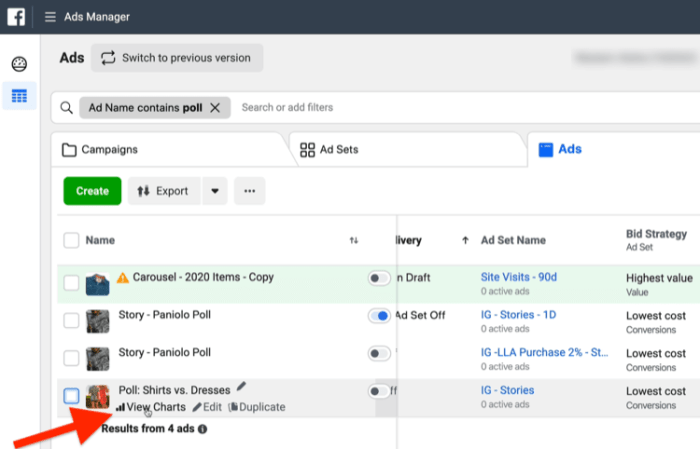
Facebook and Instagram polls offer a quick and engaging way to gather feedback. However, to maximize their impact, careful design and strategic targeting are crucial. This section dives into optimizing your poll design for readability and visual appeal, as well as how to precisely select your audience segments for maximum campaign effectiveness.
Structuring Polls for Readability
Effective poll design prioritizes clear, concise questions. Avoid overly complex or ambiguous language that could confuse respondents. A simple, direct question is key to a high response rate. Short, punchy questions are often better than lengthy ones. Presenting options in a visually organized manner also enhances readability.
Consider using bullet points or a numbered list to present poll options, making them easy to scan and comprehend.
Visual Appeal for Increased Engagement
Visual appeal significantly impacts the likelihood of a user interacting with your poll. Use high-quality images or videos related to the poll topic to make it more visually engaging. Consider using relevant colors and fonts to create a consistent brand aesthetic. High-contrast text and background combinations are essential for readability on various devices and screen sizes. Avoid overwhelming the user with too much visual information; keep it focused and relevant.
Precise Audience Segmentation
Selecting the right audience segment is crucial for poll success. Your target audience should be deeply considered. By identifying your ideal customer profile, you can refine your targeting parameters for maximum effectiveness. Broad targeting can lead to a lower response rate and a less engaged audience. The key is to understand your ideal customer’s demographics, interests, and behaviors.
By knowing these factors, you can tailor your poll to resonate with the right people.
Leveraging Facebook/Instagram Targeting Options
Facebook and Instagram offer extensive targeting options to reach specific demographics and interests. These options include age, location, gender, relationship status, interests, behaviors, and more. Understanding these options allows you to precisely tailor your poll to the right audience. Using detailed targeting criteria can significantly improve your poll’s performance by ensuring the right people see it.
Table of Targeting Options and Potential Impact
| Targeting Option | Potential Impact on Campaign Performance | Example |
|---|---|---|
| Age | Reaching specific age groups for relevant product launches or surveys. | Targeting users aged 18-25 for a new social media app. |
| Location | Focusing on specific geographic areas for local events or product launches. | Targeting users in the San Francisco Bay Area for a new tech product launch. |
| Interests | Reaching users interested in specific topics or hobbies for tailored surveys. | Targeting users interested in gardening for a poll on the best gardening tools. |
| Behaviors | Targeting users based on their online activity, purchase history, or engagement patterns. | Targeting users who have recently purchased similar products for a follow-up survey. |
| Custom Audiences | Reaching existing customers or website visitors with targeted polls. | Targeting customers who have previously visited your website with a poll about their experience. |
Running Successful Polling Campaigns
Turning your Facebook polls and Instagram polling stickers into valuable insights requires more than just launching them. A well-defined strategy, coupled with meticulous execution and analysis, is key to maximizing their impact. This section dives into the practical steps of running successful polling campaigns.Understanding your goals and objectives for each poll campaign is paramount. A clear understanding of what you want to achieve – whether it’s gauging customer preference, gathering feedback on a new product, or simply gauging public opinion – will guide every decision you make.
Without this direction, your efforts can easily become scattered and ineffective.
Looking for ways to boost your Facebook and Instagram engagement? Seven tips for using polls can help. Understanding how search engines crawl your site is crucial, and that’s where a beginners guide to robots.txt comes in handy. beginners guide robots txt will give you a solid foundation. Knowing how search engines operate can indirectly improve your poll ad performance by optimizing your website for visibility.
This, in turn, can lead to a higher return on investment from your Facebook and Instagram poll ads. Ultimately, these 7 tips will help you craft effective campaigns.
Setting Clear Goals and Objectives
Defining clear objectives for your polling campaign is crucial. These objectives should be SMART: Specific, Measurable, Achievable, Relevant, and Time-bound. For example, instead of a vague goal like “get feedback,” aim for “gather feedback on the design of our new product within the next two weeks to inform design revisions.” This specific objective provides a framework for the entire campaign.
Setting Up and Launching Polls Effectively
A well-structured poll campaign involves careful planning and execution. The process includes selecting the right platform (Facebook or Instagram), crafting compelling questions, and targeting the ideal audience.
- Platform Selection: Choose the platform best suited to your target audience and campaign goals. Instagram polls are often ideal for quick, casual feedback, while Facebook polls can accommodate more complex questions and detailed responses.
- Compelling Question Design: Ensure questions are clear, concise, and avoid ambiguity. Avoid leading questions that might bias responses. Provide a variety of answer options to encourage diverse input.
- Audience Targeting: Utilize the platform’s targeting options to reach the specific audience most relevant to your poll. This might involve demographics, interests, or even custom audiences based on prior interactions.
Analyzing Poll Results for Insights
The insights gleaned from poll results can be instrumental in understanding audience preferences and informing future strategies. Analyzing the data involves identifying trends, patterns, and key takeaways.
- Identifying Trends: Look for recurring patterns in the responses. For instance, a consistent preference for a particular feature in a product design suggests a strong consumer demand.
- Spotting Patterns: Consider if specific demographic groups show distinct preferences. This can inform tailored marketing efforts.
- Extracting Key Takeaways: Summarize the most significant findings and translate them into actionable strategies. For example, if a significant portion of respondents prefer a certain color, consider incorporating that color into future designs.
Measuring Campaign Effectiveness
Measuring the effectiveness of your polling campaign involves tracking key metrics and comparing them against your predefined goals.
- Tracking Key Metrics: Monitor metrics like response rate, completion rate, and the distribution of responses across different options.
- Comparison to Goals: Evaluate if the campaign results align with the established objectives. Did the poll achieve the desired level of engagement and insight? Did the results provide actionable insights for future decisions?
- Iterative Improvement: Use the feedback to refine your future polling strategies, improving the quality and effectiveness of subsequent campaigns.
Launching a Poll Campaign – Step-by-Step Guide
A well-structured poll campaign involves several crucial steps. This table Artikels the process, from planning to analysis.
| Phase | Action |
|---|---|
| Planning | Define goals, target audience, and question design. |
| Setup | Choose the platform, create the poll, and target the audience. |
| Launch | Activate the poll and monitor participation. |
| Analysis | Compile and interpret results, identifying trends and patterns. |
| Action | Implement insights gained into future strategies. |
Leveraging Data from Polls
Turning poll results into actionable insights is crucial for maximizing campaign effectiveness. By understanding what your audience wants and needs, you can fine-tune your messaging and product development to resonate more deeply with your target market. Polls provide a direct line to your audience’s thoughts, offering invaluable feedback that can drive substantial improvements.Analyzing poll data goes beyond simply recording results; it’s about interpreting the underlying motivations and preferences.
This interpretation allows for the creation of targeted strategies that speak directly to the needs and desires revealed in the responses. By acting on this feedback, brands can build stronger connections with their customers and increase their chances of success.
Extracting Actionable Insights from Poll Results
Poll results are not just numbers; they represent a wealth of information about your audience’s preferences. Careful analysis reveals patterns, trends, and specific feedback that can be used to improve future campaigns. Identify the most common responses, pinpoint areas of agreement and disagreement, and understand the reasons behind the choices. Qualitative data, such as open-ended questions, provides further context and insight.
Looking for ways to engage your audience on Facebook and Instagram? Seven tips for using Facebook poll and Instagram polling sticker ads can boost your engagement, but did you know you can also apply these techniques to market to your employees? market to your employees effectively. These same interactive tools, like polls and quick questions, can foster a sense of community and improve internal communication, making these strategies just as useful for internal marketing as they are for external campaigns.
So, whether you’re reaching out to customers or colleagues, these 7 tips can help you get the most out of your social media engagement.
Using Poll Data to Inform Future Marketing Decisions and Strategies
Integrating poll data into your marketing strategies allows for more targeted campaigns. Understanding the preferences revealed by your audience allows you to tailor your marketing materials to resonate more deeply. If a poll reveals a strong preference for a specific feature, allocate resources to developing that feature or emphasizing it in your marketing. This targeted approach leads to more efficient resource allocation and more effective campaigns.
Tailoring Content and Messaging Based on Audience Feedback, 7 tips for using facebook poll and instagram polling sticker ads
Using poll results to personalize your content and messaging is paramount. If a poll indicates a strong interest in a particular topic, dedicate resources to creating content addressing that interest. Modify your messaging to directly address concerns or preferences, creating a more personalized and engaging experience for your audience. This creates a sense of understanding and value for your audience, fostering trust and loyalty.
Examples of Brands Successfully Using Poll Data to Improve Their Offerings
Numerous brands have successfully utilized poll data to enhance their products and services. For example, a clothing retailer might use a poll to gauge customer preferences for specific colours or styles. Based on the results, they can adjust their inventory or marketing campaigns to better align with consumer demand. Another example could be a software company using polls to understand user pain points and subsequently develop features that address those issues.
These instances highlight the potential for poll data to drive significant improvements in product development and customer satisfaction.
Table Illustrating Correlation Between Poll Results and Campaign Adjustments
| Poll Result | Interpretation | Campaign Adjustment |
|---|---|---|
| High preference for eco-friendly packaging | Customers value sustainability | Increase emphasis on eco-friendly packaging in marketing materials and product development. |
| Strong preference for faster delivery options | Customers prioritize convenience | Implement faster delivery options and highlight this feature in promotional materials. |
| Negative feedback on customer service response time | Customers experience slow response times | Increase customer service staff and/or implement automated responses to reduce response time. |
Integrating Polls with Other Marketing Strategies
Polls aren’t just a standalone marketing tool; they can be a powerful catalyst for amplifying your overall marketing efforts. By strategically integrating them with other channels, you can significantly enhance engagement, gather valuable insights, and ultimately drive better results. This integration allows you to create a more cohesive and impactful marketing strategy, fostering a stronger connection with your audience.Integrating polls with other marketing strategies allows for a multi-faceted approach to understanding your audience.
Instead of relying on isolated data points, you gain a holistic view of customer preferences, needs, and motivations, ultimately leading to more effective marketing campaigns and personalized experiences.
Strategies for Integrating Polls into Other Marketing Channels
Polls can seamlessly blend into various marketing channels. Their ability to capture real-time feedback makes them particularly valuable in interactive campaigns.
- Email Marketing Integration: Include a poll as a follow-up to a promotional email, encouraging recipients to share their feedback on a new product or service. This creates a two-way dialogue and demonstrates that you value their input. For example, a company launching a new subscription box could ask subscribers about their preferred box contents, encouraging engagement and feedback.
- Website and Landing Page Integration: Use polls to gauge user interest in specific products or services, or to gather feedback on the user experience. For example, after a user completes a lead capture form, a poll about their purchase intention can help refine your sales process. This real-time data helps you optimize your conversion funnel.
- Social Media Campaign Integration: Promote a poll alongside a social media post, creating a sense of urgency and encouraging engagement. This can be especially effective when linked to a limited-time offer or contest. For instance, a clothing retailer could use a poll to determine which new collection design is most popular and use that result in their next advertising campaign.
Using Poll Results to Generate Leads and Drive Conversions
Understanding how your audience responds to polls can significantly improve your lead generation and conversion rates. Analyzing poll results allows you to tailor your messaging and offers to resonate with specific audience segments.
Looking for ways to boost engagement with Facebook polls and Instagram polling stickers? I’ve got 7 tips to help you! But, with AI changing SEO so rapidly, it’s crucial to understand how to prioritize what truly matters in search engine optimization. Check out this article on how to focus on what matters in SEO as AI accelerates rapid change.
Ultimately, understanding the core SEO principles will help you create more effective polls and drive better results with your Facebook and Instagram campaigns.
- Segmenting Your Audience: Identify specific audience segments based on their responses to polls. This allows for targeted marketing messages and tailored offers, improving engagement and conversion rates. For example, a fitness app could segment users based on their fitness goals and preferences, sending targeted promotions and workout plans to each group.
- Personalizing Customer Experiences: Use poll data to personalize customer interactions. Tailoring messaging to specific customer needs and preferences fosters stronger connections and increases the likelihood of conversions. This can include offering customized recommendations based on their responses to a poll about their preferences.
- Optimizing Landing Pages and Ads: Utilize poll data to optimize landing pages and advertising campaigns. For instance, a poll about a user’s preferred payment method can help you optimize the checkout process on your website, resulting in increased conversions. This includes creating calls-to-action based on the poll responses to better address specific needs and preferences.
Examples of Successful Poll-Marketing Campaign Combinations
Effective campaigns often leverage polls to understand audience preferences and tailor their messaging accordingly.
- A travel agency could use a poll asking potential customers about their dream vacation destinations. The agency can then tailor their advertising to highlight trips to those specific destinations, leading to higher conversion rates and more qualified leads.
- A software company might use polls to gather feedback on a new feature. They can then use this feedback to refine the feature before its release, resulting in a more desirable and user-friendly product.
Leveraging Poll Data to Personalize Customer Experiences
Poll data provides valuable insights into customer preferences and behaviors, allowing for a personalized experience.
- Product Development: Using poll results to inform product development can lead to higher customer satisfaction and increased sales. For instance, a poll about user preferences in a mobile game can inform the design of new levels or characters.
- Content Creation: Understanding customer interests allows for more effective content creation. This can be as simple as using poll data to determine the type of content to publish on a blog or social media.
Synergistic Impact of Combining Polls with Other Marketing Activities
The table below highlights the potential synergistic impact of combining polls with other marketing activities.
| Marketing Activity | Poll Integration | Synergistic Impact |
|---|---|---|
| Email Marketing | Include polls as follow-ups to emails | Increased engagement, improved response rates, and valuable feedback |
| Social Media Marketing | Run polls alongside posts | Increased interaction and engagement, better targeting |
| Website Optimization | Use polls on landing pages | Improved conversion rates, enhanced user experience |
| Content Creation | Gather audience input on content themes | More relevant and engaging content, improved content performance |
Addressing Potential Challenges
Running Facebook and Instagram poll campaigns can be rewarding, but challenges are inevitable. Understanding potential pitfalls and developing strategies to overcome them is crucial for maximizing the effectiveness of these campaigns. This section delves into common obstacles and offers actionable solutions to ensure your polls yield valuable insights.
Common Obstacles in Poll Campaigns
Poor engagement can stem from various factors, including uninteresting questions, irrelevant targeting, or poorly timed campaigns. Low response rates can significantly impact the reliability of data collected from polls. This can lead to skewed results, making it challenging to draw meaningful conclusions or make informed decisions based on the gathered data.
Strategies for Overcoming Low Engagement
Crafting engaging poll questions is paramount. Questions should be clear, concise, and relevant to your target audience. A well-defined target audience ensures your poll reaches the right people. Consider using visuals, emojis, or interactive elements to capture attention. Experiment with different question types to see what resonates best with your audience.
Addressing Uninteresting Poll Results
Uninteresting results often arise from poorly chosen topics. Researching your target audience’s interests and preferences is vital. Consider trending topics or events relevant to your industry or brand. For example, a fashion brand might poll customers on their preferences for upcoming seasonal trends. Adapting the poll based on preliminary feedback can lead to more engaging results.
Handling Negative Feedback or Criticism
Negative feedback or criticism, though sometimes unexpected, can provide valuable insights. Actively listen to the feedback and address concerns. Maintain a professional and respectful tone in your responses. Constructive criticism can inform future campaign strategies and help improve the overall experience for participants.
Examples of Successful Challenge Navigation
Many brands have successfully navigated challenges in their polling campaigns. For instance, a fitness brand that saw low engagement in its initial polls revised its questions and incorporated user-generated content to increase participation. By understanding the reasons for low engagement, the brand adjusted its approach and saw a significant improvement in poll response rates.
Table of Potential Challenges and Solutions
| Potential Challenge | Strategies for Overcoming the Challenge |
|---|---|
| Low Engagement | Refine poll questions, target audience, and campaign timing. Utilize visual elements and interactive features. |
| Uninteresting Results | Conduct thorough research on target audience preferences, consider trending topics, adapt based on preliminary feedback. |
| Negative Feedback | Actively listen to feedback, respond professionally and respectfully, and use the feedback to improve future campaigns. |
Outcome Summary
In conclusion, leveraging Facebook polls and Instagram polling stickers can significantly enhance your social media marketing efforts. By following these seven practical tips, you can craft engaging campaigns, gain valuable insights, and ultimately drive conversions. From creating compelling questions to analyzing data and integrating polls with other strategies, this comprehensive guide provides a roadmap for success. Remember to adapt these strategies to your specific brand and target audience for optimal results.

